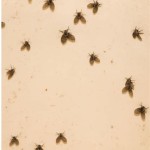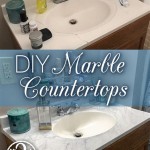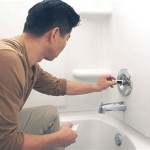How to Remove Hair Dye Stains from Bathroom Floors
Hair dyeing, whether performed at home or in a salon, carries the potential for unwanted stains. Spilled dye can quickly adhere to bathroom surfaces, particularly floors. The composition of hair dye, containing strong pigments designed to penetrate and bind to hair, makes these stains challenging to remove without the proper techniques and cleaning agents. Understanding the nature of the stain and the type of flooring material are crucial first steps in determining the most effective removal method.
The porous nature of many bathroom floor materials, such as grout, tile, and certain types of linoleum, allows hair dye to seep into the surface, making removal more difficult over time. Early intervention is paramount; the longer the dye sits on the floor, the greater the likelihood of permanent staining. Immediate action can significantly reduce the effort required for stain removal and minimize the risk of discoloration.
Key Considerations Before Starting
Before attempting any stain removal method, it is essential to consider several factors to prevent further damage to the bathroom floor. Firstly, identify the flooring material. Common bathroom floor types include ceramic tile, porcelain tile, vinyl (linoleum), natural stone (such as marble or granite), and occasionally, wood. Each material reacts differently to various cleaning agents. Using an abrasive cleaner on a delicate surface like marble, for instance, can lead to scratching and dulling.
Secondly, test the chosen cleaning solution in an inconspicuous area. This test patch will reveal any adverse reactions, such as discoloration, etching, or damage to the floor's finish. Apply a small amount of the cleaning solution to a hidden corner or under the toilet, wait for a few minutes, and then wipe it away. Observe the area for any signs of damage before proceeding to treat the stain.
Thirdly, gather the necessary supplies. This may include protective gloves, cleaning cloths (microfiber cloths are recommended for their non-abrasive properties), sponges, scrub brushes (with soft bristles to avoid scratching), and a bucket for rinsing. Having all materials readily available streamlines the cleaning process and minimizes the chance of the dye setting further.
Effective Stain Removal Techniques
Several methods can be employed to remove hair dye stains from bathroom floors, ranging from mild solutions to more potent cleaning agents. The choice of method depends on the severity of the stain, the type of flooring, and personal preference.
1. Mild Detergent and Water: For fresh stains, a simple solution of mild detergent and warm water can be surprisingly effective. Mix a small amount of dish soap or laundry detergent with warm water in a bucket. Dip a cleaning cloth or sponge into the solution, wring out the excess water, and gently scrub the stained area. Rinse the area thoroughly with clean water and dry with a clean cloth. Repeat the process as necessary.
This method is suitable for most types of flooring and is less likely to cause damage. However, it may not be sufficient for older, more stubborn stains. The key is to act quickly and apply moderate pressure while scrubbing. Avoid using excessive water, especially on floors prone to water damage, such as wood or some types of linoleum.
2. Baking Soda Paste: Baking soda is a mild abrasive and a natural deodorizer, making it a useful agent for removing stains and odors. Create a paste by mixing baking soda with a small amount of water until it forms a thick consistency. Apply the paste directly to the hair dye stain and allow it to sit for 15-30 minutes. The baking soda will help to absorb the dye and lift it from the surface.
After the waiting period, scrub the paste gently with a soft-bristled brush or sponge. Rinse the area thoroughly with clean water and dry with a clean cloth. Baking soda is generally safe for most flooring materials, but it is always advisable to test it in an inconspicuous area first. Its mild abrasive action can help to dislodge the dye without causing significant damage.
3. Rubbing Alcohol (Isopropyl Alcohol): Rubbing alcohol is a solvent that can dissolve many types of stains, including hair dye. Dampen a clean cloth or cotton ball with rubbing alcohol and gently blot the stained area. Avoid excessive rubbing, as this can spread the stain or damage the floor's finish. Allow the alcohol to sit on the stain for a few minutes before wiping it away with a clean cloth.
Rinse the area thoroughly with clean water and dry with a clean cloth. Rubbing alcohol is effective but can be harsh on some flooring materials, particularly vinyl and certain types of linoleum. It is crucial to test it in an inconspicuous area before applying it to the entire stain. Use rubbing alcohol in a well-ventilated area, as the fumes can be irritating.
4. Hydrogen Peroxide: Hydrogen peroxide is a bleaching agent that can effectively remove stains, but it should be used with caution, especially on colored or dark flooring. Dilute the hydrogen peroxide with water in a 1:1 ratio. Apply the solution to the stain and allow it to sit for a few minutes. Monitor the area closely to ensure that the hydrogen peroxide does not bleach or discolor the floor.
After the waiting period, wipe the area with a clean cloth and rinse thoroughly with clean water. Dry with a clean cloth. Hydrogen peroxide is best suited for white or light-colored floors, as it can lighten darker surfaces. Always test it in an inconspicuous area before use. Wear gloves when handling hydrogen peroxide to avoid skin irritation.
5. Commercial Stain Removers: Numerous commercial stain removers are specifically designed for removing various types of stains, including hair dye. Choose a stain remover that is appropriate for the type of flooring material and follow the manufacturer's instructions carefully. Many stain removers contain harsh chemicals, so it is essential to wear gloves and work in a well-ventilated area.
Test the stain remover in an inconspicuous area before applying it to the entire stain. Apply the stain remover to the stained area and allow it to sit for the recommended amount of time. Scrub the area gently with a soft-bristled brush or sponge. Rinse the area thoroughly with clean water and dry with a clean cloth. Ensure that all traces of the stain remover are removed to prevent any damage to the floor.
Addressing Stubborn Stains
Some hair dye stains may prove resistant to the initial cleaning attempts. In such cases, repeated applications of the aforementioned methods may be necessary. However, if the stain persists, more aggressive techniques may be required, but these should be approached with caution to avoid damaging the floor.
1. Magic Eraser: Magic erasers are melamine foam sponges that act as mild abrasives. Dampen the magic eraser and gently rub the stained area. Magic erasers can be effective for removing stubborn stains, but they can also scratch or dull the finish of some flooring materials. Test the magic eraser in an inconspicuous area before use.
Use light pressure when scrubbing to avoid damaging the floor. Rinse the area thoroughly with clean water and dry with a clean cloth. Magic erasers are best suited for smooth, non-porous surfaces like ceramic tile and porcelain tile.
2. Acetone (Nail Polish Remover): Acetone is a strong solvent that can dissolve many types of stains, including hair dye. However, it is also highly corrosive and can damage many flooring materials, particularly vinyl, linoleum, and some types of tile. Use acetone as a last resort and only after testing it in an inconspicuous area.
Dampen a cotton ball with acetone and gently blot the stained area. Avoid rubbing, as this can spread the stain or damage the floor. Allow the acetone to sit on the stain for a few seconds before wiping it away with a clean cloth. Rinse the area thoroughly with clean water and dry with a clean cloth. Acetone should be used in a well-ventilated area, and gloves should be worn to protect the skin.
3. Professional Cleaning Services: If all other methods fail, consider hiring a professional cleaning service. Professional cleaners have access to specialized equipment and cleaning solutions that can effectively remove stubborn stains without damaging the floor. They can also assess the type of flooring material and recommend the best course of action.
Preventative Measures
Prevention is always better than cure. Several measures can be taken to minimize the risk of hair dye stains on bathroom floors during the dyeing process.
1. Cover the Floor: Before starting the dyeing process, cover the bathroom floor with old towels, newspapers, or a plastic drop cloth. This will protect the floor from spills and splatters.
2. Work Carefully: Exercise caution when applying hair dye to avoid drips and spills. Use a dyeing kit with a non-drip applicator and work in a well-lit area to ensure accuracy.
3. Clean Up Spills Immediately: If any hair dye spills on the floor, clean it up immediately with a damp cloth or paper towel. The sooner the spill is addressed, the easier it will be to remove the stain.
4. Use a Dedicated Dyeing Area: Consider using a dedicated area for hair dyeing, such as a utility room or garage, to minimize the risk of staining the bathroom floor. This area should be easy to clean and have adequate ventilation.
By taking these preventative measures, the likelihood of hair dye stains on bathroom floors can be significantly reduced, saving time and effort in the long run.

How To Remove Hair Dye From Your Bathroom

How To Remove Semi Permanent Hair Dye From Bathroom

How To Remove Hair Dye Drips Spills From Hard Surfaces

How To Get Hair Dye Off Bathroom Walls Tiles By Mira Showers

How To Clean Hair Dye Stains From Diffe Bathroom Surfaces City

How To Get Hair Dye Out Of Carpet Clorox

3 Ways To Remove Hair Dye From A Wall Wikihow

How To Get Hair Dye Off Bathroom Walls Tiles By Mira Showers

How To Get Hair Dye Out Of Towels Clorox

How To Get Hair Dye Off Bathroom Tiles
Related Posts







